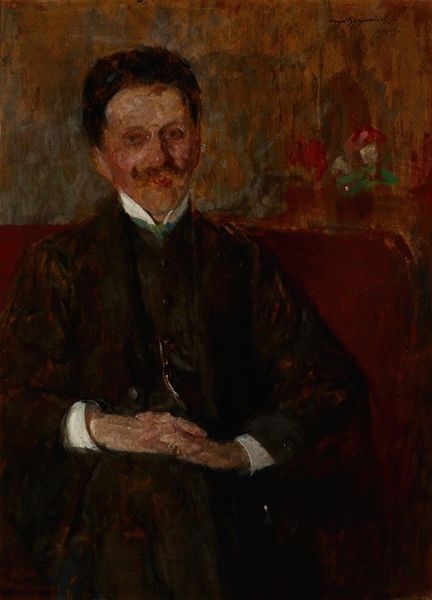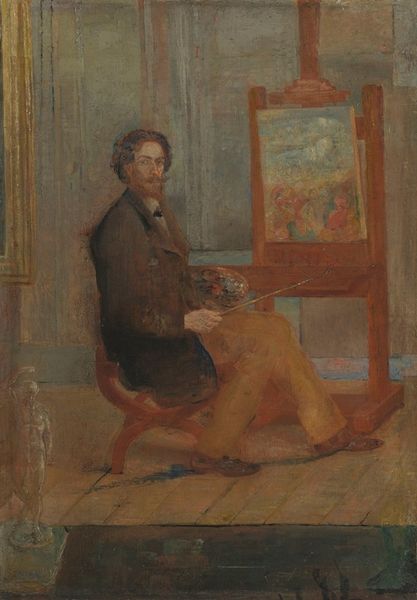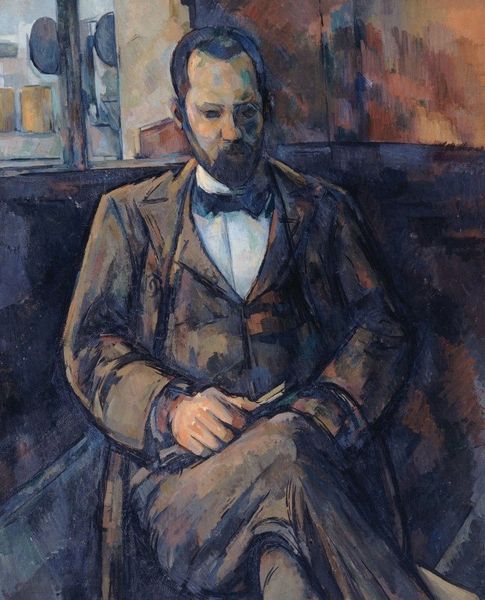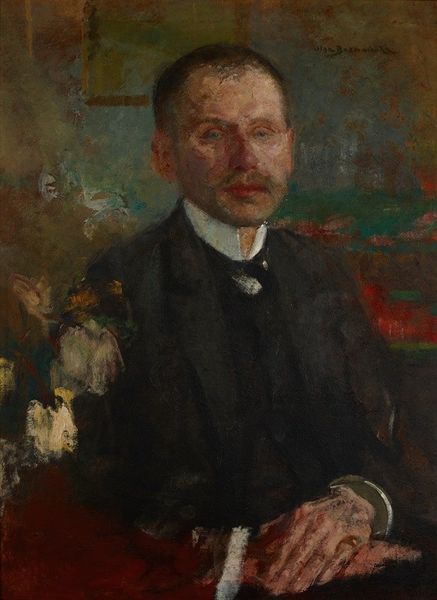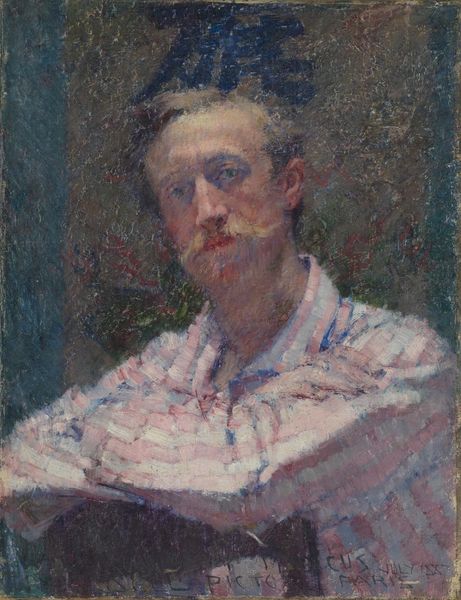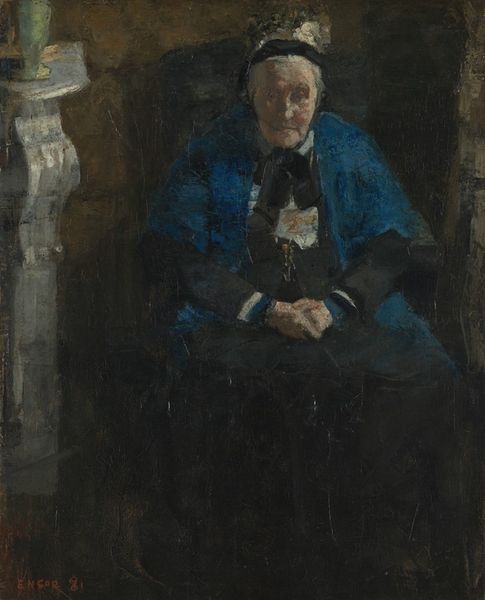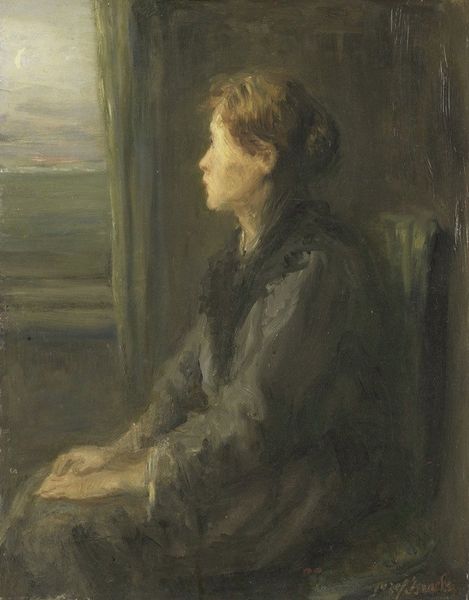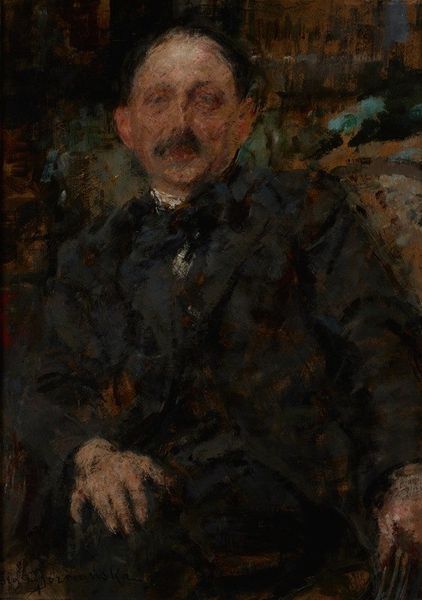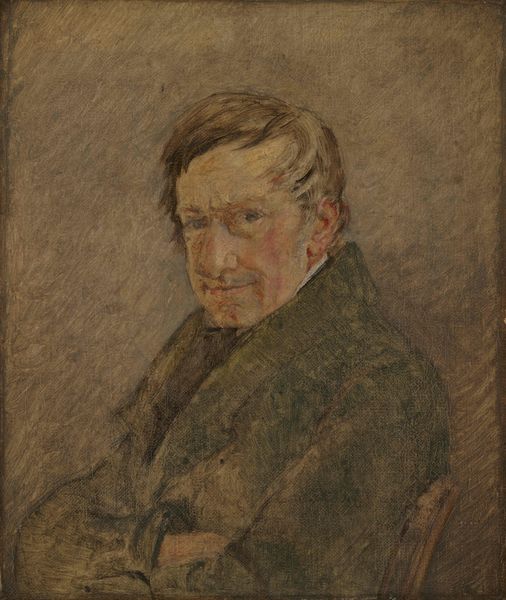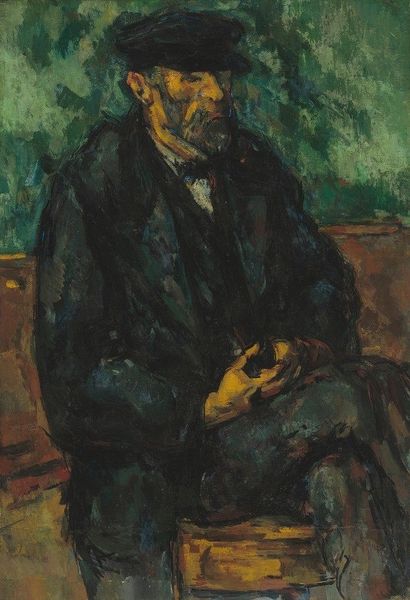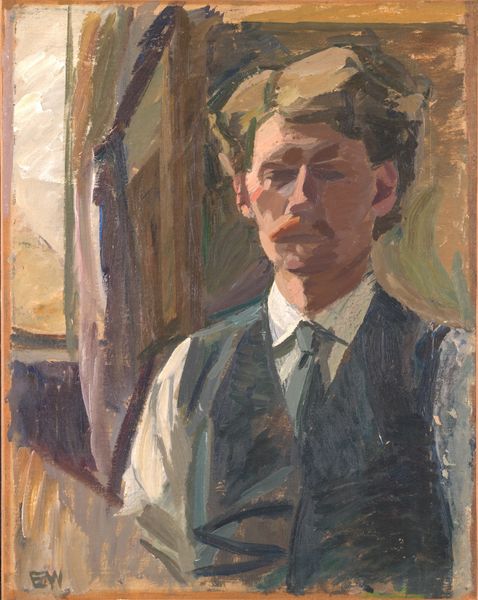
painting, impasto
#
figurative
#
painting
#
impasto
#
symbolism
#
academic-art
#
modernism
#
realism
Copyright: Public Domain: Artvee
Editor: So, this is James Ensor’s “Portrait of Willy Finch,” painted in 1882. It's an oil painting with quite a heavy impasto, making it almost sculptural. It strikes me as…melancholy, maybe? With that dark palette and intense gaze. What do you see in this piece, that perhaps I'm missing? Curator: Melancholy's a good word. But I also see a simmering tension, wouldn't you say? It's that push and pull between realism and something else… something that’s about to break free. Notice how Finch isn't just *sitting*—he's poised. And Ensor's brushwork…it's like he's wrestling with the canvas itself. The academic tradition is there, undeniably, but then there are those wilder, more expressive passages…those whispers of modernism that threaten to unravel the whole thing. Does that make sense? Editor: Definitely. It's like he's trapped in the formality, but wants to escape. Is that why it’s considered symbolism too? Curator: Precisely. It's not just about depicting Finch; it's about hinting at his inner world, at the turmoil of the artist’s soul on the verge of major creative change. I think Ensor uses Finch to subtly reflect himself – this idea of the artist struggling to find their own voice. He makes it feel like you are really on the verge of a breakthrough of style. Editor: It’s amazing how much is communicated in the brushstrokes themselves, then. A sort of foreshadowing through texture. I was so focused on the overall darkness; I missed that tension. Curator: That’s the beauty of art, isn't it? We see something different each time, depending on where we’re standing.
Comments
No comments
Be the first to comment and join the conversation on the ultimate creative platform.
